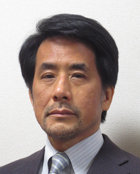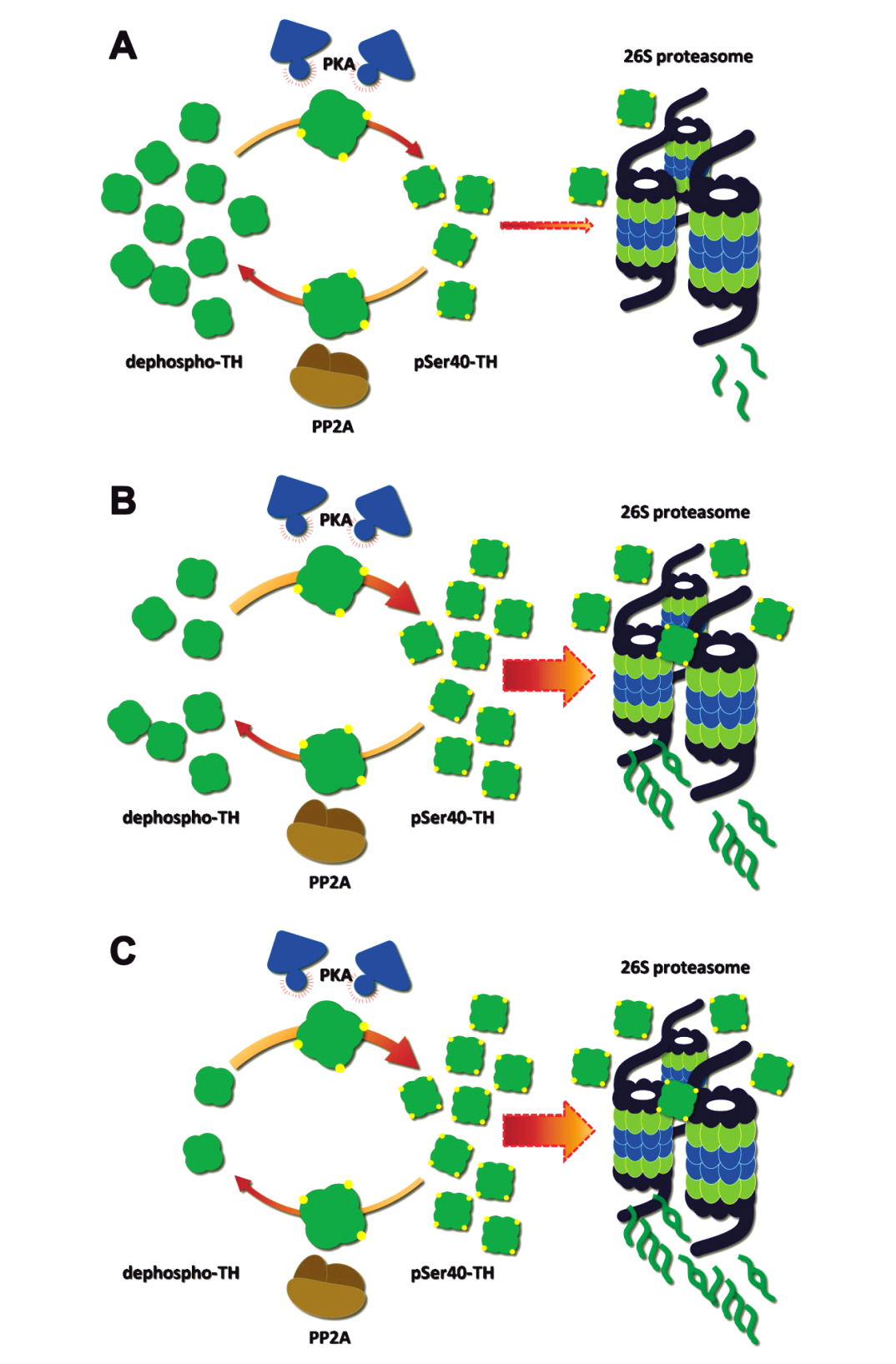Hiroshi Ichinose (Tokyo Institute of Technology)

“Role of monoaminergic input on the developmental alteration in the neural circuits of the basal ganglia”
We are studying on the regulatory mechanism of dopamine (DA) synthesis in the brain. As tyrosine hydroxylase (TH) is thought to be the rate-limiting enzyme for production of dopamine, the TH activity is tightly regulated through several mechanisms. Recently, we analyzed how the TH protein is chemically modified and subsequently degraded under deficiencies of DA and tetrahydrobiopterin (BH4), a cofactor for TH, in PC12D cells. When the DA contents in PC12D cells were decreased by inhibition of the synthetic pathway, a marked and persistent increase in phosphorylated TH at 40Ser (p40-TH) was concomitantly observed. This phosphorylation was mediated by D2 dopamine auto-receptor and cAMP-dependent protein kinase (PKA). Our immunoprecipitation experiments showed that the increase in the p40-TH level was accompanied with its poly-ubiquitination. Treatment of PC12D cells with cycloheximide showed that total-TH protein level was reduced by the DA- or BH4- depletion. Notably, this reduction in the total-TH protein level was sensitive not only to a 26S proteasomal inhibitor, MG-132, but also to a PKA inhibitor, H-89. These data demonstrated that DA deficiency should induce compensatory activation of TH via phosphorylation at 40Ser through D2-autoreceptor and PKA-mediated pathways, which in turn give a rise to its degradation through an ubiquitin-proteasome pathway, resulting in a negative spiral of DA production when DA deficiency persists. We believe that regulation of TH protein levels are relevant to the function of the basal ganglia especially in direct- and indirect- pathways of the neural circuit.
Recent Publications
1. Kawahata I, Ohtaku S, Tomioka Y, Ichinose H, Yamakuni T (2015) Dopamine or biopterin deficiency potentiates phosphorylation at Ser and ubiquitination of tyrosine hydroxylase to be degraded by the ubiquitin proteasome system. Biochem Biophys Res Commun 465: 53-58.
2. Tokuoka H, Hatanaka T, Metzger D, Ichinose H (2014) Nurr1 expression is regulated by voltage-dependent calcium channels and calcineurin in cultured hippocampal neurons. Neurosci Lett 559: 50-55.
3. Lee NC, Shieh YD, Chien YH, Tzen KY, Yu IS, Chen PW, Hu MH, Hu MK, Muramatsu SI, Ichinose H, Hwu WL (2013) Regulation of the dopaminergic system in a murine model of aromatic l-amino acid decarboxylase deficiency. Neurobiol Dis 52C: 177-190.
4. Tokuoka H, Muramatsu S, Sumi-Ichinose C, Sakane H, Kojima M, Aso Y, Nomura T, Metzger D, Ichinose H (2011) Compensatory regulation of dopamine after ablation of the tyrosine hydroxylase gene in the nigrostriatal projection. J Biol Chem 286: 43549-43558.
5. Homma D, Sumi-Ichinose C, Tokuoka H, Ikemoto K, Nomura T, Kondo K, Katoh S, Ichinose H (2011) Partial biopterin deficiency disturbs postnatal development of the dopaminergic system in the brain. J Biol Chem 286: 1445-1452.
6. Kadkhodaei B, Ito T, Joodmardi E, Mattsson B, Rouillard C, Carta M, Muramatsu S, Sumi-Ichinose C, Nomura T, Metzger D, Chambon P, Lindqvist E, Larsson NG, Olson L, Björklund A, Ichinose H, Perlmann T (2009) Nurr1 is required for maintenance of maturing and adult midbrain dopamine neurons. J Neurosci 29: 15923-15932.
Posted:2016/03/10

